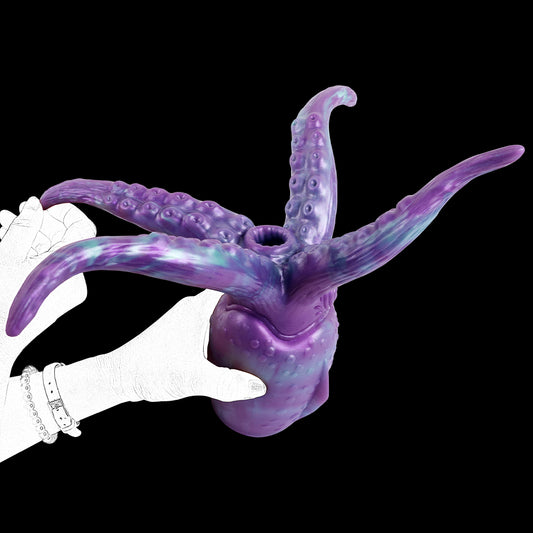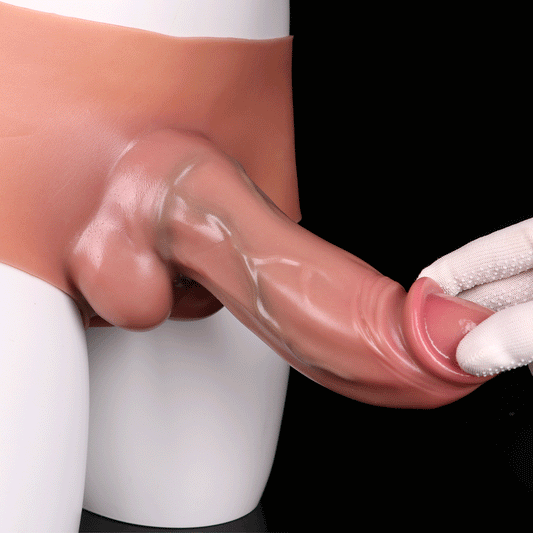Unpacking the Taboo - The Truth About Consensual Non-Consent (CNC) and Why It’s More Common Than You Think
In a culture increasingly open to exploring diverse forms of intimacy, one kink continues to stir curiosity, controversy, and confusion in equal measure: Consensual Non-Consent (CNC). At first glance, it may sound paradoxical—even alarming. But for many, CNC is a deeply psychological and emotionally resonant dynamic rooted in trust, control, and fantasy.
This post aims to demystify CNC, diving beyond definitions to examine the psychology, the risks, and the ethical—and even legal—frameworks that surround it. If you're new to this kink or simply curious, consider this your starting point for a deeper, safer understanding.
What Is CNC, Really?
Consensual Non-Consent refers to an erotic roleplay or dynamic in which one partner (or both) consents in advance to an encounter that mimics non-consensual acts—like resistance, coercion, or forced submission. The key word? Consensual. Everything is negotiated, agreed upon, and ideally practiced between partners who have a solid foundation of trust.
It’s not a loophole to avoid respecting boundaries—it's the opposite. CNC requires more communication, more boundaries, and more care than most sexual experiences.
Psychological Appeal
The appeal of CNC can vary greatly among individuals. For some, it might be about exploring power dynamics, pushing boundaries, or experiencing a heightened sense of vulnerability and trust. It can also involve elements of fantasy fulfillment where taboo scenarios are safely enacted.
Why It’s More Common Than People Realize

Let’s dismantle a myth: CNC is not a fringe or “extreme” fetish. In fact, studies (including one from the Journal of Sex Research) have consistently shown that rape fantasies are among the most common across genders, particularly among women. But having a fantasy doesn’t mean someone wants the real-life version—it means they may enjoy the safe psychological thrill of losing control, being “taken,” or pushing beyond everyday sexual scripts.
Fantasy is a playground, not a blueprint.
What Makes CNC So Powerful?
For many, CNC is about exploring power, vulnerability, fear, and safety in a controlled environment. Paradoxically, the “loss” of control in CNC is often what gives someone greater emotional freedom. It creates a space where shame, submission, or dominance can be expressed without judgment.
But here’s the thing: CNC isn’t about pain or humiliation by default. It can be romantic, gentle, rough, silent, verbal, or anything in between. The essence lies in the emotional texture and pre-negotiated structure.
How to Deepen the CNC Experience - Tools, Atmosphere, and Headspace
Once you’ve established safety and consent, you may be wondering—how can we make the CNC experience even more immersive, more intense, more real (while staying safe)? The answer lies in a thoughtful mix of tools, sensory control, and psychological layering.
Use BDSM Toys That Reinforce Power Play
BDSM tools can heighten the psychological edge of CNC by reinforcing themes of control and surrender. Here are a few essentials:
- Blindfolds: Sensory deprivation amplifies vulnerability and heightens anticipation. A simple blindfold can turn every touch into a surprise, adding to the realism of a CNC scenario.
- Wrist/ankle restraints: Use cuffs, rope, or under-the-bed bondage systems to simulate a lack of physical control. Bonus: being restrained can trigger a deeper submissive headspace.
- Gags: If you're exploring forced silence or struggle themes, a ball gag or breathable gag can intensify the feeling of helplessness. (Just make sure you have non-verbal safewords or signals!)
- Impact tools: Paddles, floggers, or crops can simulate punishment or domination—but should be used with training and care.
- Role-specific props: Things like collars, uniforms, or even household items (e.g., belt, scarf, necktie) can help build a fantasy setting.

Domlust, for instance, offers premium-quality restraints and sensory tools that pair perfectly with CNC dynamics—designed not only for intensity but also for safety and comfort.
Build the Scene Like a Story
CNC becomes most powerful when it's emotionally immersive. Use storytelling to elevate the experience:
- Create a “prey and predator” narrative, or a corrupted authority figure and unwilling subordinate.
- Set up mock resistance: verbal no’s, physical pushing away (within agreed limits), struggling while bound—all of which are pre-negotiated and play-acted.
- Use dirty talk or inner monologues to establish power: “You can fight all you want, but you’re mine now.”
Create a Controlled Environment

The atmosphere matters. CNC is psychological, and your environment should reflect that. Consider:
- Low lighting, candles, or red bulbs to create intensity.
- Curated playlists: choose music that matches the mood—whether eerie, aggressive, or slow and darkly seductive.
- Scent: subtle perfumes, leather, or even incense can lock in memory through smell, deepening the experience.
Play With Timing and Surprise
One way to enhance CNC is by playing with anticipation:
- Set a loose “CNC window” (e.g., sometime tonight), so the submissive doesn’t know exactly when the scene will begin.
- Incorporate unexpected initiations within agreed-upon timeframes, which can create genuine adrenaline spikes—safely.
- Practice “consensual ambush”: when the bottom knows something will happen, but not what or when.
The Invisible Risks - What Often Gets Overlooked
While mainstream conversations on CNC rightly emphasize consent and safewords, they often gloss over the emotional aftermath. Even with mutual trust and planning, CNC scenes can trigger past trauma, leave partners feeling confused, or cause unexpected shame or disconnection.
This is why aftercare is essential. Emotional check-ins, cuddling, reassurance, or even silent space can help partners return to baseline and feel emotionally safe after such intense experiences.
Another blind spot? Not all CNC fantasies are healthy to act out. Some may stem from unresolved trauma, internalized shame, or coercive dynamics. If you're unsure where a desire is coming from, talking with a kink-aware therapist is not weakness—it’s wisdom.
Culture, Law, and the Fine Print
Let’s not pretend CNC exists in a vacuum. It intersects with cultural attitudes, gender dynamics, and legal grey areas. In some countries or regions, even consensual CNC scenes—if misinterpreted—could lead to legal trouble, especially if recordings or third parties are involved. Clear documentation, texted consent, or pre-scene agreements can offer some level of protection, but legal literacy is an often-ignored piece of CNC play.
Likewise, CNC may be viewed differently across cultures. What’s empowering in one context may be considered dangerous or taboo in another. Kink is not just about what you like—it’s about how it fits within your social and emotional ecosystem.
So… Should You Try It?
Only if you’re prepared to plan more than you play. CNC can be deeply rewarding—but it’s not a casual experiment. Here’s a starter checklist if you’re considering it:
- Do you and your partner(s) have strong mutual trust?
- Can you talk openly about sexual desires and fears?
- Do you have established safewords—or gestures if verbal cues aren’t possible?
- Are you both educated on consent, trauma responses, and emotional safety?
- Are you ready to debrief and provide/receive aftercare?
If the answer is yes, CNC could offer a profound layer of intimacy you haven’t explored yet.
CNC Isn’t Dangerous—But Ignorance Is
CNC is not inherently harmful. But when practiced without education, emotional literacy, or respect for boundaries, it can become reckless. Done right, it’s not about hurting someone—it’s about honoring trust in the most radical way possible.
And maybe that’s the sexiest part of all.

























